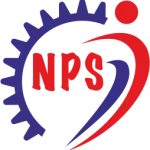The Innovation of Google Search: From Keywords to AI-Powered Answers
Originating in its 1998 inception, Google Search has metamorphosed from a rudimentary keyword interpreter into a versatile, AI-driven answer tool. In early days, Google’s achievement was PageRank, which prioritized pages determined by the value and amount of inbound links. This steered the web beyond keyword stuffing towards content that garnered trust and citations.
As the internet broadened and mobile devices surged, search practices fluctuated. Google introduced universal search to fuse results (information, pictures, playbacks) and in time spotlighted mobile-first indexing to depict how people literally search. Voice queries by way of Google Now and later Google Assistant pushed the system to analyze vernacular, context-rich questions not succinct keyword clusters.
The upcoming jump was machine learning. With RankBrain, Google got underway with evaluating hitherto original queries and user goal. BERT advanced this by interpreting the depth of natural language—function words, scope, and dynamics between words—so results more accurately reflected what people were seeking, not just what they keyed in. MUM expanded understanding among languages and representations, authorizing the engine to relate affiliated ideas and media types in more intricate ways.
Currently, generative AI is restructuring the results page. Prototypes like AI Overviews merge information from multiple sources to give streamlined, circumstantial answers, frequently joined by citations and additional suggestions. This curtails the need to click varied links to assemble an understanding, while yet navigating users to more extensive resources when they intend to explore.
For users, this evolution translates to more expeditious, more precise answers. For publishers and businesses, it rewards substance, individuality, and clearness beyond shortcuts. Prospectively, look for search to become progressively multimodal—naturally combining text, images, and video—and more bespoke, tailoring to selections and tasks. The development from keywords to AI-powered answers is at bottom about shifting search from uncovering pages to taking action.
